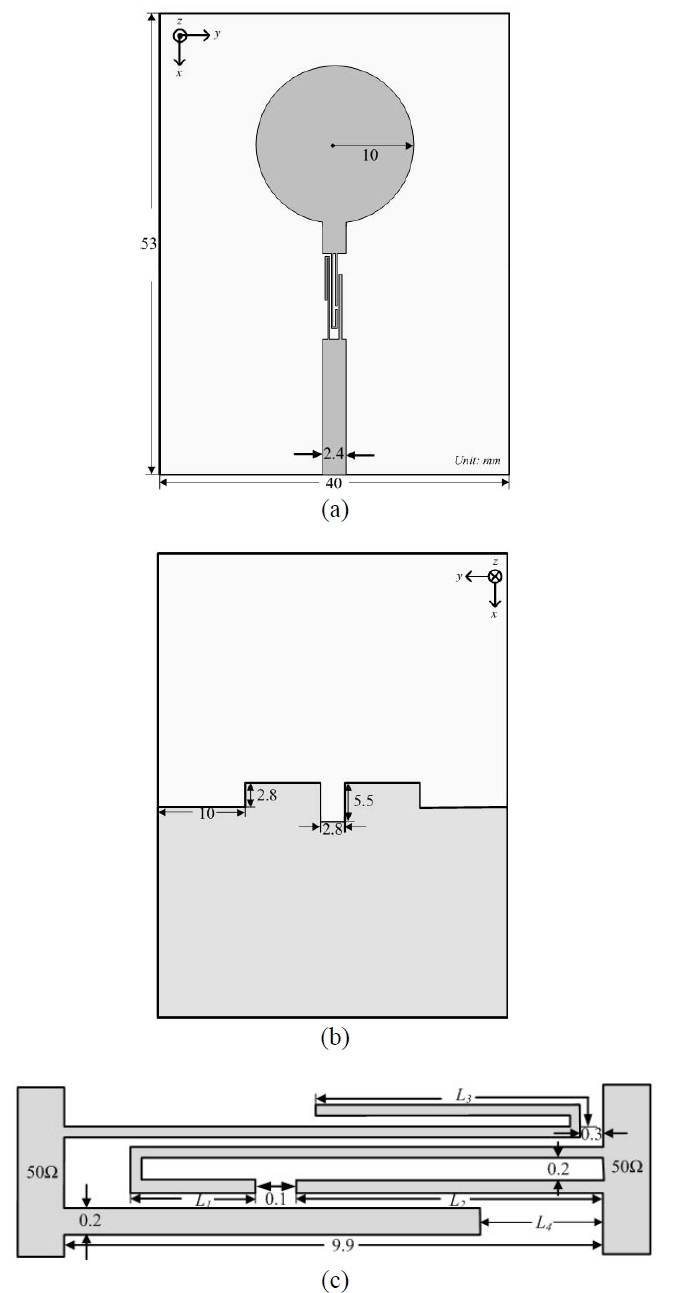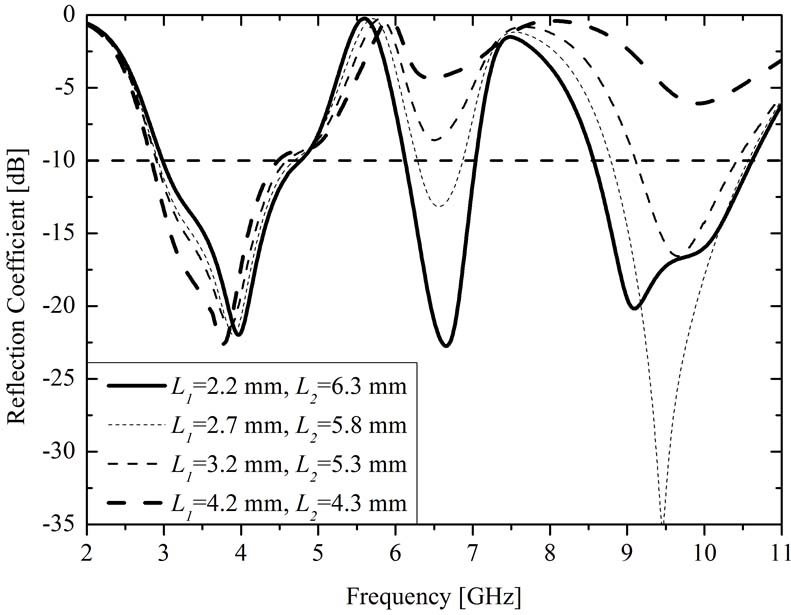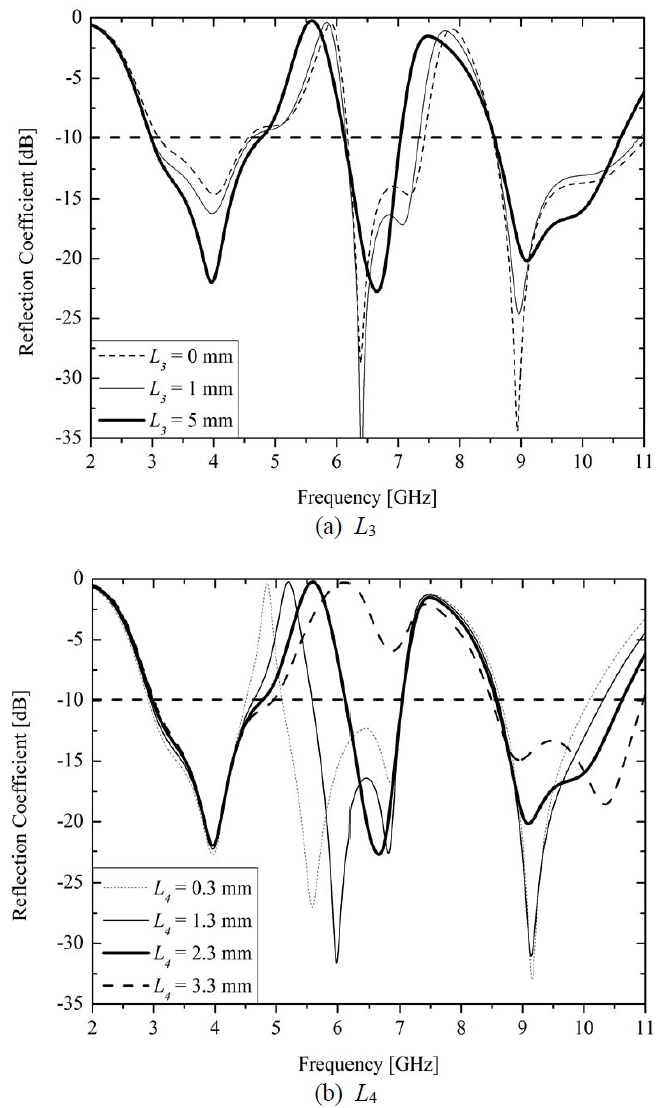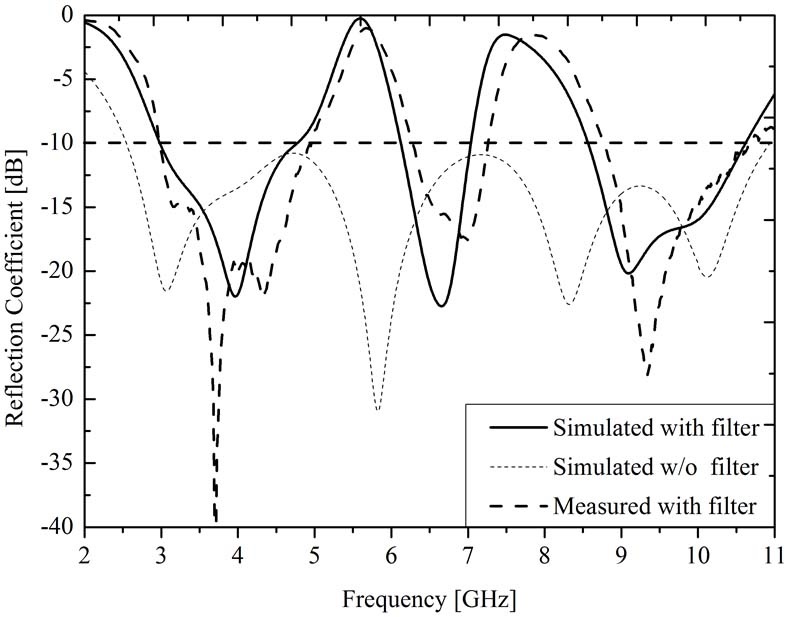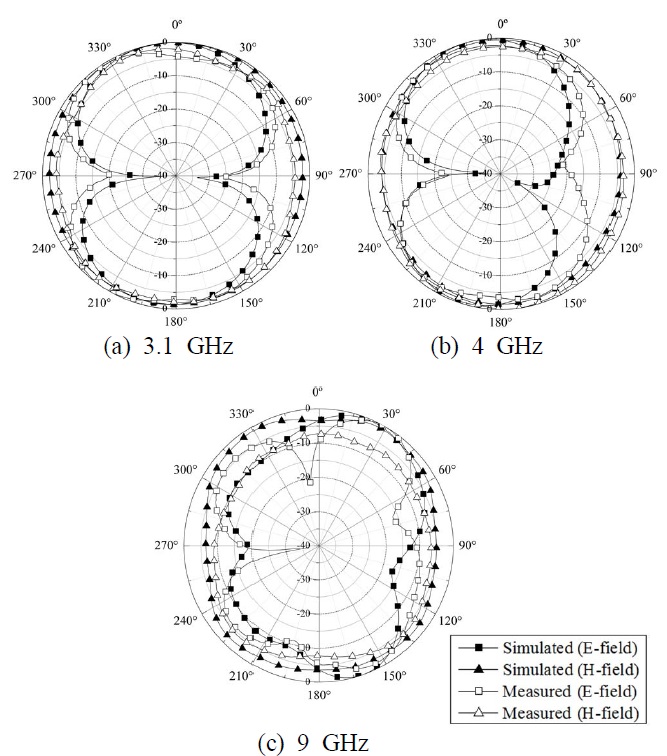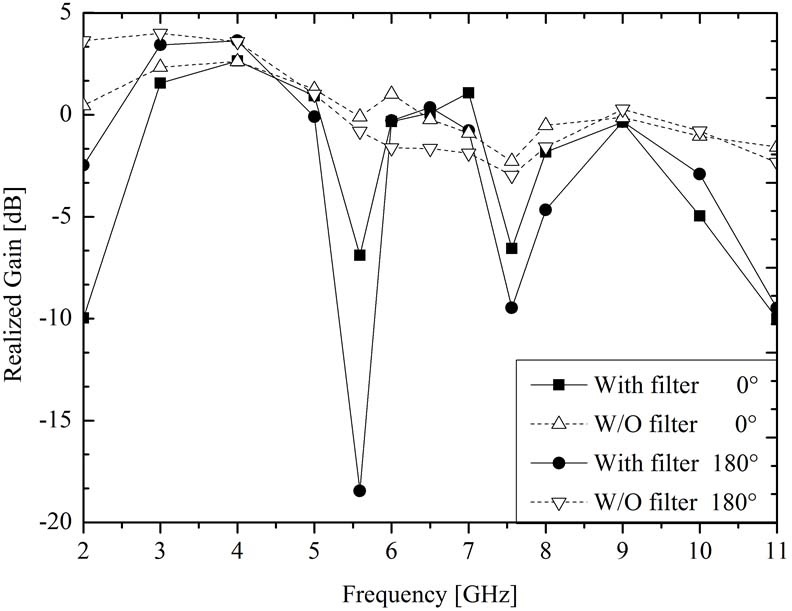



This paper presents a novel ultra-wideband (UWB) antenna that rejects narrow and broad bands and is suitable for wireless communications. The base of the proposed antenna has a circular patch that can cover the UWB frequency range (3.1~10.6 GHz). The interference issues caused by co-existence within the UWB operation frequency are overcome by a design that uses a parallel-coupled asymmetric dual-line with a circular monopole antenna. The proposed antenna showed a stable radiation pattern, realized gain and reflection coefficient lower than ?10 dB across the UWB operation bandwidth except for 5.15~5.85 GHz and 7.25~8.4 GHz. The fabrication, simulation, and measurement results obtained for the proposed antenna were in good agreement with the expected values.
The allocation by the Federal Communication Commission (FCC) of the unlicensed band at frequencies between 3.1~10.6 GHz [1] for commercial purposes has resulted in rapid development of ultra-wideband (UWB) wireless communication systems. This frequency band is now in great demand in microwave components such as indoor and hand-held wireless devices, owing to its merits, particularly its good impedance matching, large bandwidth, low signal distortion and high speed of more than 100 Mbps within the operation frequency bands [2]. However, a problem arises that affects and interrupted UWB operation. For example, UWB systems will experience interference from the wireless communication bands of Wireless Local Area Network (WLAN) (5.15~5.35 GHz & 5.725~5.825 GHz) and X-band military satellite (7.25 ~7.75 GHz & 7.9~8.4 GHz). Therefore, the bands used fort WLAN and X-bands military satellite must be rejected. UWB researchers have attempted to suppress this interference by studying and investigating various band stop methods that reject the typical WLAN band or large part of it [3]~[6]. One of the methods used to suppress some interference frequencies adapt a parallel coupled line and this can demonstrate notch characteristics [7], [8].
This paper describes a UWB monopole antenna with band-stop characteristics that uses a parallel-coupled dual- line. The asymmetric dual-line is suggested. The proposed antenna can suppress interference from strong narrow and broad by controlling the asymmetric dual-line. However, this solution can only reject planned interference bands. The operation characteristics in UWB, which eliminates influences related to WLAN and X-band military satellite, are advanced by determining and optimizing the proposed antenna by a parasitic line in a parallel- coupled line. Additionally, to achieve the good impedance matching, the bottom GND of the proposed antenna is modified by cutting rectangular slot on the center edge and symmetrical rectangular slots on the right and left edge [9]. These adaptations allowed the optimal design, fabrication, and measurement of a UWB notch antenna with an asymmetric dual-line.
The configuration of the UWB printed antenna for band-notch characteristics is proposed in Fig. 1(a) and (b). The proposed antenna consists of a circular patch radiator and a parallel-coupled asymmetric dual-line on a Taconic substrate with a size of 53 mm×40 mm, thickness of 1.14 mm, and relative permittivity 2.2. The adopted circular patch is operated as a radiating function and the microstrip feed line is fixed at 2.4 mm to activate 50-Ω characteristic impedance at 3.1~10.6 GHz. The detailed parallel-coupled asymmetric dual-line of the proposed antenna is shown in Fig. 1(c). Based on these points, the parameters are as follows: the parameters follow as:
Ⅲ. Simulated and Measured Results
The proposed UWB antenna is simulated using electro- magnetic simulation tools HFSS and measured using Wiltron 3605B network analyzer at the frequency from 2 GHz to 11 GHz. By adopting the methods of a different length for
This work proposes a shorted monopole antenna with a coupled UWB antenna with asymmetric dual-line for notch characteristics has been proposed. We adapted an asymmetric dual-line and confirmed the rejection of narrow and broad bands (5.15~5.85 GHz & 7.25~8.4 GHz). The band-notch frequencies are tuned by adjusting reasonable values through parameter analysis. The results obtained using the proposed antenna have been promising, and hence, this antenna appears to be suitable for use in UWB communication systems.
